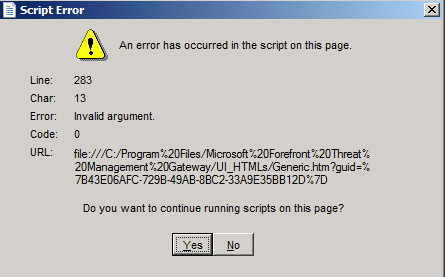Last two weeks I had to update some NTP servers from one German company. When I requested new firmware I received following e-mail:
Dear Sir,
unfortunately, I cannot provide a new firmware since your compact flash card is too small and the action might end up in a system’s inconsistency.
Thus, you are also not the only customer who is affected by this, we offer bigger compact flash cards for 65€ each. Please let me know whether this is of interest for you and if you need an official offer.
Mit freundlichem Gruß / With kind regards
So this made my very upset. To be able to upgrade to the newest version of firmware I had to pay 65EUR for new flashcard. So I wrote couple e-mail to this company. I wanted to know the reason why I need to invest more to NTP server. I found out that firmware got big and it cannot be uploaded into flash which came with NTP server. This looked weird to me. Why would I have to invest into device if manufacter’s engineers made a mistake. I already decided not to sell manufacter’s devices. And I though that was end of the story.
Today I received following e-mail:
Dear Ondrej,
I just wanted to let you know that we dramatically improved our update procedure and, after an intensive clean-up, released
the new firmware version 5.34h which can be installed on 64MB compact flash cards without any problems. The new release is 4 MB (~25%) smaller (!) than the previous version without removing any features.
Although you already expressed your extreme dissatisfaction with our products and decided for yourself to not recommend or
buy Meinberg products in the future, your feedback helped us to improve our software and I sincerely thank you for that.
Best Regards,
Heiko
So it’s funny how some angry and mad e-mails can change such a things. Now we can upgrade our devices. But I don’t think we will offer them anymore to customers 🙂
Today I was needed to make batch script to ping some IP addresses for problem described in this article. My first script was as following:
@Echo Off
:Loop1
ping 1.1.1.1 -n 1 -w 30000 >NUL
ping 8.8.8.8 -n 1 | find /i “bytes=” || goto FailedPing
goto Loop1
:FailedPing
echo FAILED PRIMARY NET TO VIA 10.0.0.1 %time% >>ping_test.log
route delete 0.0.0.0 mask 0.0.0.0 10.0.0.1
route add 0.0.0.0 mask 0.0.0.0 10.0.0.2
goto Loop1
When I ran this script in cmd.exe or I scheduled it, it ate one CPU core. I didn’t know why it’s happening, because when I ran this commands in cmd.exe separatelly it workied fine. After couple minutes of debugging I found out that script is not waiting for “ping” commands to finish. It was weird. My colleague told me to use “sleep.exe” to make it wait for a little bit. But that was not a solution. I wanted to force it to wait for ping commands. I tried weird thing. Instead of “ping” I used whole path for ping.exe “%SystemRoot%\\System32\\ping.exe” and for command “route” I used “%SystemRoot%\\System32\\route.exe”. Now everything looks and works perfect.
I have no idea why this is happening, but it works and I need to remember it 🙂
When I upgraded from ISA 2006 to TMG 2010 I found some special problem. There was HQ with TMG 2010 and one branch with ASA 5505. Between those two location there was Site to Site VPN tunnel created. Everything worked fine, beside one problem. Users in branch couldn’t access anything on TMG server. They couldn’t ping it or do anything with it. They couldn’t browse Internet, because TMG was also web proxy server for them.
Read more…
Categories: Computer network, Microsoft, Security Tags: 0xc0360007, 2502685, drop, forefront, ipsec, microsoft, packet, site to site, STATUS_IPSEC_CLEAR_TEXT_DROP, tmg 2010, vpn
Customer wanted to upgrade his ISA 2006 server to “new” TMG 2010. I thought it would be nice and easy process. It could be if there were no problems which I didn’t expect to be a problem in “new” software. Old server was still functional and I wanted to prepare new server and migrate all settings and certificates.
Requirements
To install all requirements you can install required packages by yourself or you can use Run Preparation Tool from installation screen of TMG. Why didn’t they include it into installation package it self?
Messed up console
When I was done with installation I ran TMG console and I received following error:

Read more…
We had project replacing SAN switches. Customer has one old HP-UX (HP Unix) system. This system is very sensible about SAN changes.
Normal situation
You can see all hardware using command (http://www.bga.org/~lessem/psyc5112/usail/man/hpux/ioscan.1.html):
ioscan -fnC
Read more…
Most of you probably already updated Active Directory infrastructure from Windows 2003 to Windows 2008 R2. What I see most is that administrators do not upgrade DFS replication subsystem for SYSVOL shares. Before Windows Server 2008 (also R2) was released FRS (File Replication System) is used. In Windows 2008 R2 there is new version released and it’s called DFSR (Distributed File System Replication).
FSR
FSR uses NTFS volumes’ USN journal to determine when a change has occured to a file and triggers replication. When FSR detects file close it gathers information about file and it’s attributes. It also checks file’s MD5 hash. If MD5 hash changes it will trigger replication. If file has changed whole file is send to FSR replication partners.
DFSR
First benefit of DFSR is that it doesn’t replicate whole file, but just a changed data in the file. To be able to check only changes in files it uses RDC (Remote Differential Compression) compression algorithm.
Read more…
I was wondering what would Windows XP payload to be. I always thought that there will be random characters or something like that, but I was wrong.
Read more…
Hello all
Today I earned another Cisco certificate.

I played with HP Procurve switches and I found one weird default setting. Spanning Tree Protocol is disabled by default. It was weird finding because I tried to interconnect two switches with pair of cables whole my network went down 🙂 It was overloaded with b-cast storm.
Today I was facing weird problem at our customer. They have IBM HS21 blade server with build-in dual-port Broadcom network card. There was only Windows 2008 installed with all up2date drivers. Everything worked fine besides network performance. Upload from server to other servers was around 20MBps, which is fine. Problem was download to server, because it was 1-2MBps.
Read more…


Recent Comments